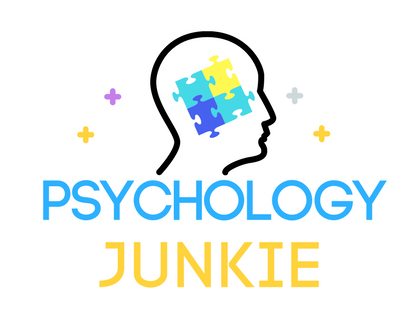Here’s the Science Behind Your Myers-Briggs® Personality Type
I’ve been asked over and over again if there is any scientific evidence for the MBTI® or psychological type. I usually direct people towards the work of neuroscience expert Dario Nardi or the numerous scientific studies done on extroversion and introversion. But today I thought I’d put together a quick-and-easy read to show you some of the basic differences between your brain and the brains of other personality types. I’m sure after checking out this article you’ll want to know more about how your brain functions! Be sure to check out Dario Nardi’s book, Neuroscience of Personality: Brain Savvy Insights for All Types of People for more information.

This article contains affiliate links. I only recommend products I truly believe in.
Table of contents
- The Science of Being an ISTJ
- The Science of Being an ISFJ
- The Science of Being an ESTJ
- The Science of Being an ESFJ
- The Science of Being an ISTP
- The Science of Being an ISFP
- The Science of Being an ESTP
- The Science of Being an ESFP
- The Science of Being an INTJ
- The Science of Being an INFJ
- The Science of Being an ENTJ
- The Science of Being an ENFJ
- The Science of Being an INTP
- The Science of Being an INFP
- The Science of Being an ENTP
- The Science of Being an ENFP
Estimated reading time: 14 minutes
The Science of Being an ISTJ
As an ISTJ you experience a mental flow state when you recall your favorite memories and experiences from the past. If you close your eyes and shut out all sensory stimulation, you can recall past details and experiences vividly. When you do this, your prefrontal cortex becomes synchronized and works efficiently. Low-distraction environments and ZERO interruptions are the key to your flow state and this is why you tend to prefer a quiet, peaceful life.
Do you like to arrange information using charts, tables, and diagrams? Thank your left-brain regions for that! Your type especially likes to use brain regions T3, O1, C3, and Fp1 to measure and arrange sensory information in a logical, organized manner.
Find out more about how your brain works here.
The Science of Being an ISFJ
As an ISFJ you are a specialist. You burn new neural pathways into your neocortex by repeating things, and studying subjects in-depth. You get into a flow state by closing your eyes and vividly recalling your favorite past experiences and memories. Simply recalling your wedding day or your favorite date in detail can make your prefrontal cortex become synchronized and efficient.
Do you get embarrassed easily? Thank your temporal lobe for your blushes! When you receive negative input, like a frown or a critique, your left temporal lobe experiences a burst of activity in response – more than any other type! But there’s an upside to this as well! Because you experience so much activity in your left temporal lobe you also are gifted with word recognition and language!
Find out more about how your brain works here.
The Science of Being an ESTJ
As an ESTJ you have a strong focus on goal achievement and error correction. You probably feel high when you check items off your to-do list, in fact, you probably feel disappointed if you forgot to put an item on your list in the first place! You can thank your prefrontal cortex for this! Your personality type relies heavily on prefrontal region fp1 to note errors in the environment, filter out unwanted information, and make decisions. You’re good at brushing off negative feedback and pointing out errors thanks to this key region of your brain. And even better, this region aids in your working memory.
Do you get a thrill from listening to a trusted authority figure? Like literary ESTJ Hermione Granger, you actually experience a synchronized mental flow state when you listen to an authority you trust!
Find out more about how your brain works here.
The Science of Being an ESFJ
As an ESFJ, you use neocortex regions that you help you to communicate, evaluate other people’s behavior, and plan for the future. You like to know what to expect, how other people are feeling, and which words will best motivate others. You also have a knack for recalling facts, following steps in a sequential order, and mimicking others behavior. This is thanks to the high activity you show in your sensory motor cortex.
Do you feel like you want to explain your decisions and values? This could be thanks to the high amount of activity you show in your prefrontal cortex, specifically the fp1 region. This part of your brain notes errors in the environment and works on explaining and deciding. All EJ types show a lot of activity in this region and all EJ type tend to “think out loud” or explain their decision-making process.
The Science of Being an ISTP
As an ISTP, you focus most of your mental energy in areas that aid in complex logical reasoning. You show extremely high activity in your frontal cortex and your parietal lobes. While all types use these regions, you show nearly constant, strong activity here on a regular basis. What does this mean for you? These regions help you to find solutions to problems using verbal or symbolic reasoning (this would help you in solving algebraic equations!). These regions also help you to break down items into precise categories, identify objects, have better aim, and weigh pros and cons quickly in risky situations.
Do you ever feel like you are more detached and unemotional than other people? As an ISTP your neocortex shuts out raw emotions when you meet people for the first time or engage in a new activity. This way you can stay as objective and unbiased as possible. Find out more about how your brain works here.
The Science of Being an ISFP
As an ISFP you spend a lot of time considering what is important and of value to you. You have a gut sense of what is right and wrong and prioritize understanding your emotions. This is thanks in part to your strong use of frontal lobe region F8. This is the part of your brain you use when you rank things in order of importance or you process you own values and morals.
Do you notice what ISN’T being said? As an ISFP you are extremely attentive when other people withhold information from you. You show high activity in temporal region t5 when you haven’t received feedback from someone or an answer is denied to you. Find out more about how your brain works here.
The Science of Being an ESTP
While many types enter a flow state while relaxing, as an ESTP you enter a flow state when responding to a crisis situation. Having to respond quickly to ever-changing circumstances and crises keeps you stimulated. This is thanks to an unusual “tennis-hop” brain pattern that you employ on a regular basis. When in this state, all regions of your neocortex are low amplitude and out of synch. This extremely effective state requires little mental energy but allows you to quickly respond to a surprise, incoming task. This could be why many ESTPs excel in careers as EMTs, firefighters, and police officers. These careers force you to think quickly in the midst of chaos and possible danger.
Do you get bored easily? As an ESTP, your neocortex is always ready and waiting for tactical action. You learn better when you can move, stand, and respond to your environment. Many ESTP children get frustrated in school when they have to sit at their desks for long periods of time. Sitting still doesn’t satisfy their brain’s strong need for action and integration with the environment.
The Science of Being an ESFP
Just like your extraverted sensing cousin, the ESTP, you show a frequent “tennis hop” brain pattern. Just like a tennis player who is lightly hopping back and forth, all regions of your neocortex are shifting in frequency on a regular basis. This effective mental state allows you to be ready for any kind of surprise, incoming task or experience. You are always ready for tactical action and you are probably faster to respond to sudden changes than many other personality types.
Are you good at multi-tasking? As an ESFP, you quickly integrate body and sensory information to multi-task and engage in physical, concrete tasks.
The Science of Being an INTJ
There’s something very unique about your INTJ brain. You see, many other personality types enter a flow state when they are doing something they are proficient in or familiar with. As an INTJ, however, you enter a mental flow state when you are tasked with an unfamiliar, novel problem. When this happens, all regions of your neocortex become synchronized and dominated by brain waves that are medium-low frequency and very high amplitude. Each region of your brain offers a different perspective to a problem, and eventually your brain helps you to “realize” an answer. Wonder why you get hunches out of the blue? You can thank your brain for that! You can also enter a flow state when you try to envision the future or imagine how something will be 10,20, or 30 years from now.
Do you hate repetition, routine, and rote practice? As an INTJ, you prefer to tackle novel problems and feed different brain regions without focusing on just one. Rote practice and repetition helps to burn new neural pathways. But as an INTJ you avoid hard-wiring your brain around a particular task. This is one of the main differences between your type and the ISTJ type. ISTJs are specialists who burn neural pathways through repetition and practice. INTJs are generalists who enjoy using many different parts of the brain and moving to a new subject once they’ve figured something out.
Find out more about how your brain works here.
Related: How You Solve Problems, Based On Your Personality Type
The Science of Being an INFJ
As an INFJ your brain literally enters a zen-like state when you are tasked with a novel, unfamiliar problem. While many types experience this when they are doing something they are familiar with, you experience this state when you are given something completely new and complex to figure out. You also enter a flow state when you envision what will happen in the future. What happens to your brain during this zen-like state? According to neuroscientist Dario Nardi, all regions of your neocortex become synchronized and dominated by brain waves that are very high amplitude and medium-low frequency. Not sure why you get hunches out of nowhere? Each section of your neocortex offers a different perspective to a problem, and your brain works to harness all neocortex regions in order to “realize” an answer. This answer may appear suddenly out of the blue or gradually as you gather more knowledge and experience.
Why is it so easy for you to walk in another person’s shoes? As an INFJ you show high brain activity in the frontal lobe region f7. This region is involved with empathy, processing emotions, and discerning the intentions of others. Find out more about how your brain works here.
Related: What Makes INFJs Dangerous
The Science of Being an ENTJ
As an ENTJ you show efficient use of mental energy by relying predominantly on four key regions in the brain. These regions are on the left-side of the brain and work to make evidence-based decisions using measurable sensory information and causal analysis. Using these brain regions enables you to have relatively good hand-eye coordination, pick up on facts and numeric details, and speak clearly. You also have the ability to filter out negative feedback and distractions and focus on pointing out and correcting errors because of the high activity you experience in your left prefrontal cortex.
How can you enter a mental flow state? As an ENTJ, you benefit from having a physical or sensory focus to enter a flow state. Using a mnemonic device or repeating a physical exercise can help you to enter a zen-like state where you are able to realize answers to unfamiliar, complex problems. Find out more here.
The Science of Being an ENFJ
As an ENFJ, you rely heavily on neocortex regions that enhance communication, evaluate others behavior, assess their intentions, and plan for the future. You show a lot of activity in your left prefrontal cortex, especially when you talk about your values and social and ethical responsibilities. This aligns with the theory that ENFJs are motivators who aim to improve the lives of their communities. You also show high activity in temporal region t5. This region helps you to notice feedback from other people and gives you feelings of embarrassment or shame when you receive negative input. It also helps you to self-correct so that you can start to receive positive input again.
Do you have an artistic side? As an ENFJ you show high-activity in the sensorimotor cortex region c4. This region helps you to understand music, draw, paint, or dance in a flowing or spontaneous manner.
Related: Understanding ENFJ Feeling
The Science of Being an INTP
As an INTP, you show strong use of four key brain regions that help you to find logical answers to complex problems. Region F3 helps you to follow a chain of logical deductions and then backtrack to find errors and solutions. Region F4 helps you accurately place concepts into the most precise categories. Region P3 helps you to calculate mathematically using a grid, and region P4 helps you to weigh pros and cons in a risky or uncertain situation to find the best single result.
Do you have a hard time listening for prolonged periods of time? You can thank your brain for that! INTPs show little to no activity in regions T3 and T4 when listening to other people. These areas show activity for only a second or two when someone starts speaking, and then you start to use other parts of the brain. As always, this isn’t an absolute rule – everyone is different regardless of type – but it seems to be a common problem for both ISTPs and INTPs. Find out more here.
The Science of Being an INFP
As an INFP you are a holistic listener. You are one of two types (the other being ISFP) who engage all brain regions that process voice, words, and sound to fully listen. All regions of your brain become alert and open to input, allowing the person who’s speaking to you to be heard without distraction. Most other types start formulating their own responses to questions while someone else is still talking, but your type frequently listens fully and waits to formulate a response until it is your turn. This intense listening ability enables you to hear with precision and empathy. You pay attention not just to the words, but how they are spoken, and what isn’t being said. Because of this ability, you, more than most other types are highly capable of noticing authenticity (or lack thereof) as well as evaluating a person’s morality and whether or not they are hypocritical.
Do you have a rich and intense imagination? You can thank frontal lobe region f7 for that! You show high activity in this region which enables you to make imaginative inferences, use empathy, and process emotional input. Find out more here.
Related: 10 Things You’ll Relate to if You’re an INFP
The Science of Being an ENTP
As an ENTP, you frequently show an unusual brain pattern that neuroscientist Dario Nardi calls the “Christmas tree” pattern. Each brain region shows a different level of activity and is high amplitude and out-of-synch with the others. Whenever a stimulus enters the brain – a taste, a sight, a sound, an idea – your brain rapidly processes the stimulus in many regions, including regions that don’t seem to apply to the stimulus at all. Your ability to do this allows you to tap into relationships and connections across situations and find unusual links. For example, you might compare love to an ocean or a significant other to a compass. You can compare seemingly unrelated things to generate fast, creative responses and find metaphors.
Are you a strategic game player? Next time you dominate a game of Risk, you can thank your brain for the victory! You show high activity in brain regions like frontal lobe f7 and parietal region P4 to weigh numerous pros and cons and find creative strategies.
The Science of Being an ENFP
As an ENFP, your brain rapidly processes new input and stimulus in numerous brain regions, including areas that don’t even apply to the stimulus at all! Have you ever wondered why you find odd relationships and connections between things? Do you ever wonder why metaphor comes so easily to you? That’s thanks to these brain regions working together to generate surprise connections. For example, you might compare the sun to an executioner or unreliable words to wind.
Do you find yourself “mirroring” other people’s emotions? As an ENFP you show high activity in frontal lobe region f7. This region helps you to walk in another person’s shoes, feel empathy, and mimic other people’s behavior. You’re also able to make imaginative inferences using this part of your brain!
Related: 3 Weird and Wonderful Secrets About the ENFP Personality Type
What Are Your Thoughts?
If you enjoyed this article, you should definitely check out Dario Nardi’s Google lecture as well as his book, Neuroscience of Personality: Brain Savvy Insights for All Types of People.












Hi Susan,
I like your article and I have also followed Dario’s explanations, but I would say that this is not the the science “behind” the personality types, because it suggests that the brain causes the different types that way, while the types cause the different pathways to form. I would say that it is the science that gives evidence for the types using their brains differently. I understand it is a continuous and interactive process, like William James already explained it, but too many people still think that the brain is the cause, while what we see is really the effect. To look “behind” the personality types we need to go further than science. We need to go into evolution and psychogenesis theory, which rely on emergence and complexity, and which can therefore never be traced back to their root.
What the fuck. There is no proven reliability of the Myers Briggs and the authors who created Myers Briggs WERENT PSYCHOLOGISTS! SCAM much?
This is a great post, and thank you for taking the time to summarize Dario Nardi’s work so succinctly. I think the issue the PP identifies, focusing on an isolated word out of context, is irrelevant. I wish Dario Nardi’s work had become more mainstream and that more people were exploring the psychometric properties of MBTI measures and the nature of the underlying construct. I love Dario Nardi’s work, which suggests of exploring the 16 types from a more modern understanding of psychological personality traits. Thank you again for this!